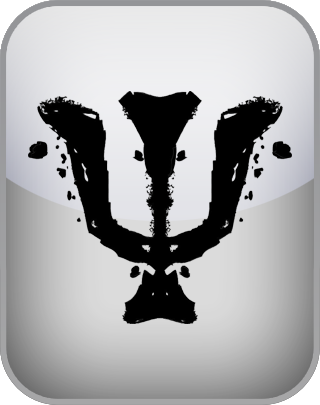Academically reviewed by Dr. Jennifer Schulz, Ph.D., associate professor of psychology
Rorschach Test
The Rorschach Inkblot Test is one of the most famous psychological projective tests in the world. Psychologists use the Rorschach to examine the personality characteristics and emotional functioning of the test taker. The test is often employed in detecting underlying thought patterns and differentiating psychotic from non-psychotic dispositions in a person’s thinking. The Rorschach is also used in forensic and custody cases, as well as to gauge a person’s general degree of adjustment to society.
What do your associations to the Rorschach images predict about you? For each of the following images, select the answer that comes the closest to your association below.
Question 1 of 10

Which is the closest to what you see in the image?
NEXT
The IDRlabs Rorschach Inkblot Test (IDR-RIT©) is the property of IDRlabs International. The IDR-RIT utilizes the concept of Rorschach’s Inkblots, but is not associated with Hermann Rorschach or the International Society of the Rorschach and Projective Methods, and it is not the equivalent of other Rorschach Inkblot Tests. The present test is in no way endorsed by, nor affiliated with, Hermann Rorschach, the International Society of the Rorschach and Projective Methods, or similar entities. No infringement is intended by the present test.
This Rorschach Inkblot Test has been made with the aid of professional analysts who have experience with organizational psychology. The test uses genuine psychometric items to measure the respondent’s correspondence to underlying thought patterns, as well as to gauge the respondent’s general level of well-being. The test is based on the following research: Iwasa, K. & Ogawa, T. (2013). Rorschach texture responses are related to adult attachment via tactile imagery and emotion. Rorschachiana, 34(2), 115–136. Miguel, F. K. & Pessotto, F. (2016). Projective aspects on cognitive performance: Distortions in emotional perception correlate with personality. Psicologia: Reflexão e Crítica, 29(1), 17. Tibon-Czopp, S. & Weiner, I.B. (2016). The Rorschach Inkblot Method: Theory. Rorschach Assessment of Adolescents. Advancing Responsible Adolescent Development. Springer, New York, NY.
Rorschach Inkblot Tests, whether they are professional, used in academic research, or free online tests like this one, are indicators to help give you a clue as to your typical thought patterns and your general level of healthy adjustment to society. In general, when dealing with projective psychometric tests like this one, no test ever devised can designate your thought patterns and general degree of healthy adjustment with complete accuracy or reliability, and no test can replace familiarizing yourself with the inner working of your mind in depth. For more information on the Rorschach Inkblot Test, consult materials from the International Society of the Rorschach and Projective Methods.
The authors of this free online Rorschach Inkblot Test are certified in the use of numerous different personality tests and have worked professionally with psychology, political psychology, and personality testing. Prior to using our free online test, please note that the results are provided "as-is", for free, and should not be construed as providing professional or certified advice of any kind. For more on our online Rorschach Inkblot, please consult our Terms of Service.
References
- Iwasa, K. & Ogawa, T. (2013). Rorschach texture responses are related to adult attachment via tactile imagery and emotion. Rorschachiana, 34(2), 115–136. https://doi.org/10.1027/1192-5604/a000045.
- Miguel, F. K. & Pessotto, F. (2016). Projective aspects on cognitive performance: Distortions in emotional perception correlate with personality. Psicologia: Reflexão e Crítica, 29(1), 17. https://doi.org/10.1186/s41155-016-0036-6.
- Tibon-Czopp, S. & Weiner, I.B. (2016). The Rorschach Inkblot Method: Theory. Rorschach Assessment of Adolescents. Advancing Responsible Adolescent Development. Springer, New York, NY.

 English
English  Español
Español  Português
Português  Deutsch
Deutsch  Français
Français  Italiano
Italiano  Polski
Polski  Українська
Українська  Русский
Русский  Türkçe
Türkçe  العربية
العربية  日本語
日本語  한국어
한국어  ไทย
ไทย  汉语
汉语 